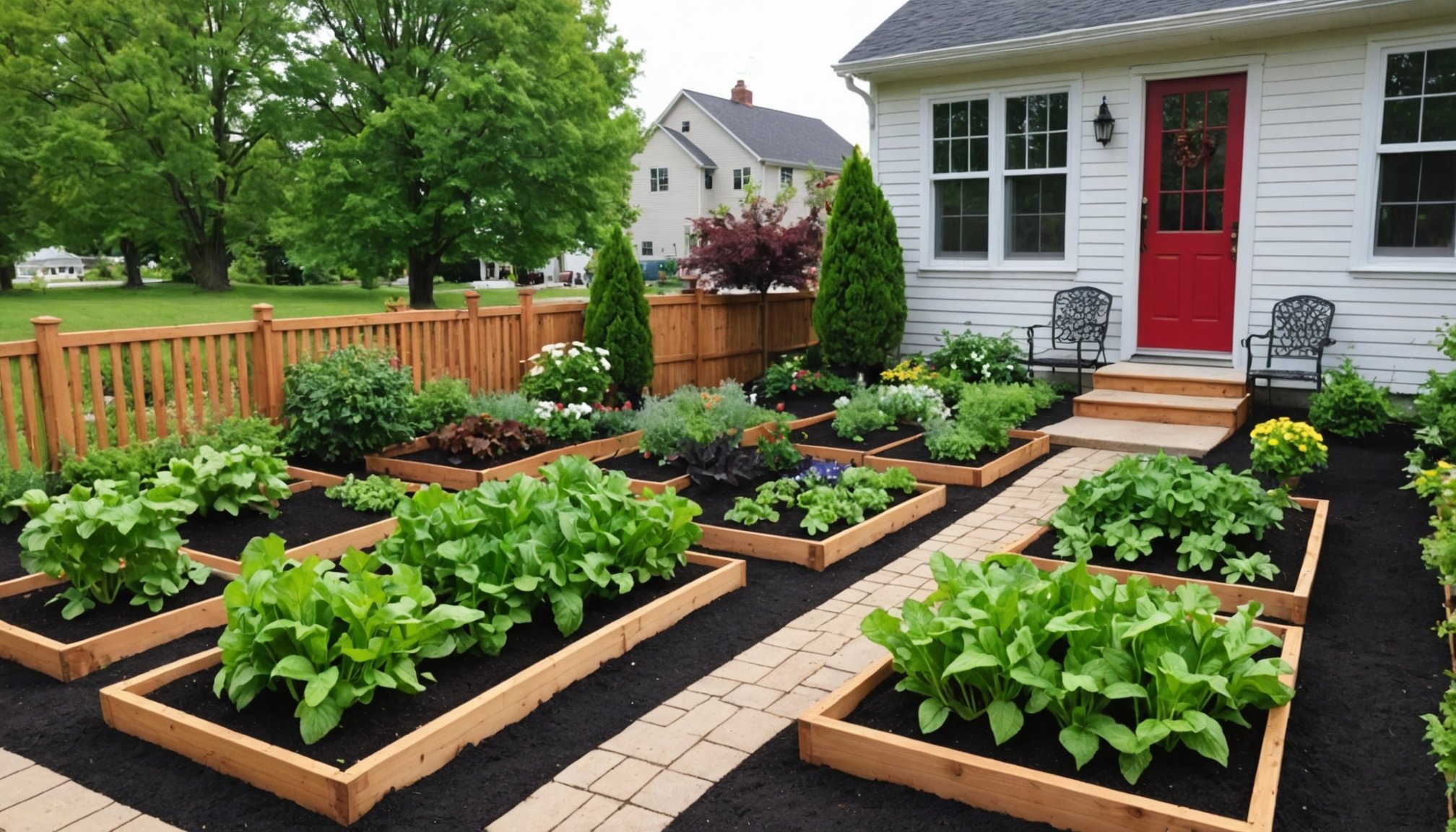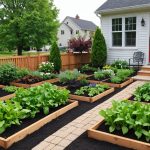Transforming your Sunderland front yard into a vibrant vegetable garden is more achievable than you might think. With a few creative strategies, even the smallest of spaces can flourish with life and produce. Imagine fresh herbs, vibrant tomatoes, and leafy greens right at your doorstep, not only enhancing your meals but also your environment. Discover practical tips for maximizing your space and integrating greenery seamlessly into your cozy outdoor area. Let’s cultivate beauty and productivity in your garden oasis!
Designing Your Vegetable Garden Layout
Creating an efficient vegetable garden design is essential, especially if you're dealing with limited space. Small space gardening can be both rewarding and challenging, but with the right strategies, you can maximise your yield.
Lire également : What is the most efficient method of water heating in a UK household?
One of the most effective methods for small space gardening is vertical gardening. By utilising vertical space, you can grow more plants without needing additional ground area. This technique involves using structures like trellises, wall planters, or hanging baskets to allow plants to grow upwards. Vertical gardening is particularly beneficial for vining plants such as tomatoes, cucumbers, and beans.
When planning your garden layout, consider the use of raised beds or containers. Raised beds are excellent for small spaces as they provide better drainage, reduce soil compaction, and can be tailored to fit any area. They also allow for easier access and maintenance. Containers offer similar benefits and can be moved around to optimise sunlight exposure or to accommodate seasonal changes.
Dans le meme genre : Revitalize Your UK Home: A Step-by-Step Guide to Restoring Victorian Era Cornices
Incorporating these strategies not only makes efficient use of space but also enhances the aesthetic appeal of your garden. A front yard garden can become a beautiful and productive space by integrating these design elements. With thoughtful planning and creativity, even the smallest garden can yield a bountiful harvest.
Selecting the Right Vegetables for Your Garden
Choosing the appropriate vegetables for your garden is crucial for a successful harvest, especially in small spaces. Begin by understanding your local climate, as it significantly influences which vegetables will thrive. For instance, Sunderland's climate is temperate, with mild summers and cool winters, making it suitable for a variety of crops.
When considering the best vegetables for small gardens, opt for those that offer high yields in limited areas. Leafy greens like lettuce and spinach are excellent choices due to their compact growth habits. Root vegetables such as carrots and radishes also perform well in small spaces and can be harvested multiple times throughout the growing season.
Seasonal planting is another key factor. In Sunderland, cool-season crops like peas and kale can be planted in early spring, while warm-season crops like tomatoes and peppers are best planted after the last frost. This approach ensures a continuous supply of fresh produce.
To further maximise space and yield, practice companion planting. This involves growing vegetables that benefit each other when planted together. For example, pairing beans with corn can improve nitrogen levels in the soil, enhancing growth. By selecting the right vegetables and employing strategic planting techniques, you can create a productive and thriving garden.
Soil Preparation and Fertilization Techniques
Understanding soil health is fundamental to successful gardening. Prior to planting, conducting a soil test is crucial to determine nutrient levels and pH balance. This information guides you in enhancing soil conditions, ensuring optimal plant growth.
Organic Gardening Approaches
For a small garden, employing organic gardening methods is beneficial. Organic fertilizers, such as compost, manure, or bone meal, enrich the soil without harmful chemicals. These amendments improve soil structure, increase microbial activity, and provide essential nutrients.
Soil Preparation Strategies
Effective soil preparation involves several steps. Start by clearing debris and tilling the soil to aerate it. Incorporate organic matter to boost nutrient content and enhance drainage. For compacted soils, adding sand or perlite can improve texture and prevent waterlogging.
Maintaining Soil Health
Throughout the growing season, maintaining soil health is vital. Regularly replenish organic matter and mulch to retain moisture and suppress weeds. Rotate crops annually to prevent nutrient depletion and pest buildup. Additionally, cover crops like clover can be planted to fix nitrogen and improve soil fertility.
By focusing on these soil preparation and fertilization techniques, you can create a thriving environment for your vegetables, leading to a bountiful harvest.
Aesthetic Integration with Landscape Design
Incorporating garden aesthetics into your vegetable garden can transform your space into a visual delight. By blending vegetable gardens with ornamental plants, you create a harmonious balance that enhances the overall appearance of your garden. This approach is particularly effective in front yard landscaping, where first impressions matter.
Blending Vegetables and Ornamentals
To achieve a seamless integration, consider planting vegetables with vibrant foliage or unique textures alongside ornamental plants. For instance, the lush leaves of kale can complement flowering perennials, while the bright stems of Swiss chard add a pop of colour.
Creating Visually Appealing Designs
Urban gardening design often requires creativity to make the most of limited space. Use raised beds with clean lines or geometric shapes to add structure. Incorporate pathways or stepping stones to guide the eye and create a sense of order. Vertical elements, such as trellises or arches, can also add height and interest.
Tips for Maintaining Neatness
To keep your garden looking tidy, regularly prune and deadhead plants to promote healthy growth and prevent overcrowding. Mulching not only conserves moisture but also provides a uniform look. Finally, choose plants with similar water and sunlight needs to ensure consistent growth and a cohesive appearance.
Maintenance and Community Resources
Maintaining a thriving vegetable garden requires consistent attention and care. Garden maintenance involves daily tasks such as watering, checking for pests, and ensuring plants receive adequate sunlight. Seasonally, tasks shift to include pruning, fertilising, and preparing the garden for changing weather conditions. Regularly updating your maintenance routine ensures a healthy and productive garden.
Engaging with Urban Gardening Resources
In Sunderland, numerous urban gardening resources are available to support gardeners. Local gardening clubs offer workshops and seminars, providing valuable knowledge and fostering a sense of community. These clubs often organise events where members can share tips and experiences, enhancing gardening skills collectively.
Exploring Sunderland's Gardening Community
Utilising community gardens and shared spaces is an excellent way to expand your gardening efforts. Sunderland boasts several community gardens where residents can cultivate plots, gaining access to larger areas and shared resources. These spaces not only provide physical gardening opportunities but also serve as hubs for exchanging ideas and techniques.
Engaging with the Sunderland gardening community offers numerous benefits, from learning new methods to forming friendships with fellow enthusiasts. By participating in local gardening initiatives, you can enhance your skills and contribute to a vibrant, green community.











